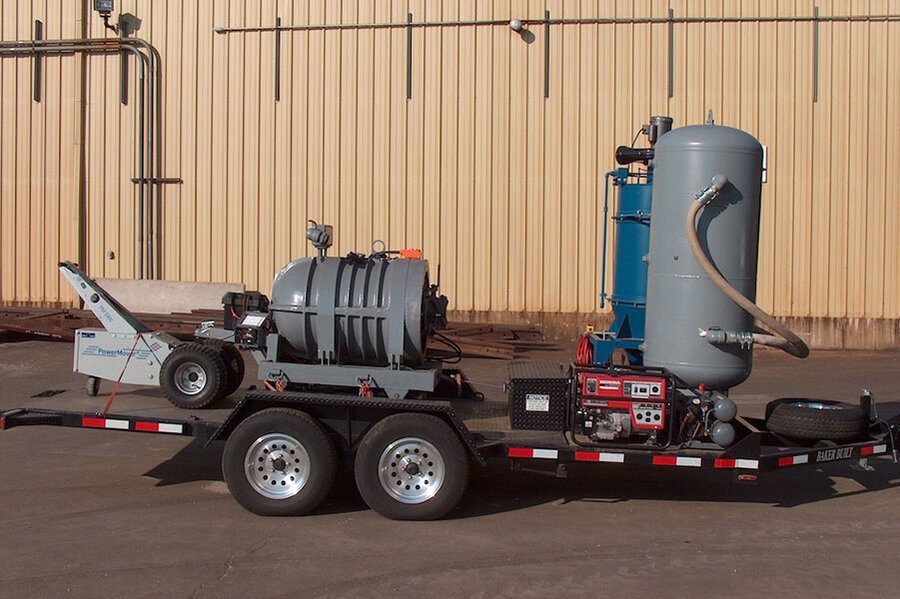How do police remove bombs without hurting anyone?
Loading...
New York police used an incredibly strong chamber to safely move an undetonated explosive Saturday night (Sept. 16), shortly after one explosion rocked New York City's Chelsea neighborhood, news sources reported.
But what exactly is this device, known as a total containment vessel (TCV), and how does it protect people from explosives?
In essence, a TCV is a chamber that fully contains the pressures and fragments released by an explosive, according to experts. Once an explosive is loaded into a TCV, authorities can safely move the bomb from point A to point B without having to shut down or evacuate streets en route, said Grant Haber, vice president of American Innovations, Inc. The company provides explosives detection, identification, containment and mitigation solutions. [The 10 Greatest Explosions Ever]
If the explosive goes off along the way, the TCV will "catch all of the primary fragmentation, and [the explosive will] not harm anyone in the immediate area," Haber told Live Science.
For instance, after police found the unexploded charge in New York on Saturday, they used a robot to examine and then load the bomb into a TCV, according to The New York Times. Then, they drove the TCV, which was attached to a police vehicle, to a police facility in the Bronx, the Times reported.
Most TCVs have two main modes: either gas tight or vented. In a gas-tight vessel, the TCV will contain not only the blast and fragments but also any gases that may contain chemical or biological agents, said Keren Banai, director of North American sales for Mistral Security, Inc., another company that makes TCVs.
If the TCV is in "vented" mode, the gases from the explosion can be released in a controlled manner from the vessel, Banai said. Depending on the amount and type of explosives, as well as how much the valve is opened, that release can sound startling, or it can come out like a whistle, Haber said.
If authorities are concerned about the gases released by an explosion, they can release the gases into two nearby tanks: one that holds the gases and another that contains air scrubbers, Haber said.
Trash can double
TCVs also have other uses, including storage. Top-vented containment vessels can also double as trash cans.
"There are containers used for storage of explosives, which are capable of containing the full effects of the blast in case of accidental detonation," Banai told Live Science in an email. "For Mistral, this ranges from as little as 30 grams [1 ounce] of explosives to as much 45 kilograms [100 lbs.]." [Sept. 11 Anniversary: What the Attacks Taught Us About Science]
Top-vented containment vessels can also be used as trash cans in public places such as stadiums, hospitals, airports and shopping malls, Haber said. However, these trash cans are known as semi-confined vessels, meaning that they don't fully confine the explosion because they have an open top.
"Trash cans are considered soft targets, because the terrorist can walk up to them, put an improvised explosive device in them and walk away safely without raising any suspicion from anyone in the immediate area," Haber said. "Then, they can remotely detonate the device via cellphone, as we've witnessed in this recent attack."
Depending on the model, the vessels can withstand a range of explosives.
"Industry standard in the United States for the TCVs are 5 kg and 8 kg [11 and 18 lbs.] however, Mistral offers TCVs for 6 kg and 9 kg [13 and 20 lbs.]," Banai said. "For stationary vessels used for storage of explosives, our range is currently up to 100 lbs. [45 kg], although we are working on higher explosive capacity."
However, TCVs are expensive, so agencies have to determine which TCV best suits their needs. The total containment vessels can cost between $150,000 and $500,000 each, while the vented containment vessels, which double as trash cans, can range from $3,000 to $10,000 apiece, Haber said.
Because of these high price tags, authorities usually try not to purposefully explode devices within the chamber, as that can damage the vessels, Haber said. Instead, most agencies try to only use TCVs to transport explosive items, he said.
Original article on Live Science.
Editor's Recommendations
- 9/11 Science: 10 Ways Terrorist Attacks Rocked America
- Flying Saucers to Mind Control: 7 Declassified Military & CIA Secrets
- Understanding the 10 Most Destructive Human Behaviors
Copyright 2016 LiveScience, a Purch company. All rights reserved. This material may not be published, broadcast, rewritten or redistributed.







